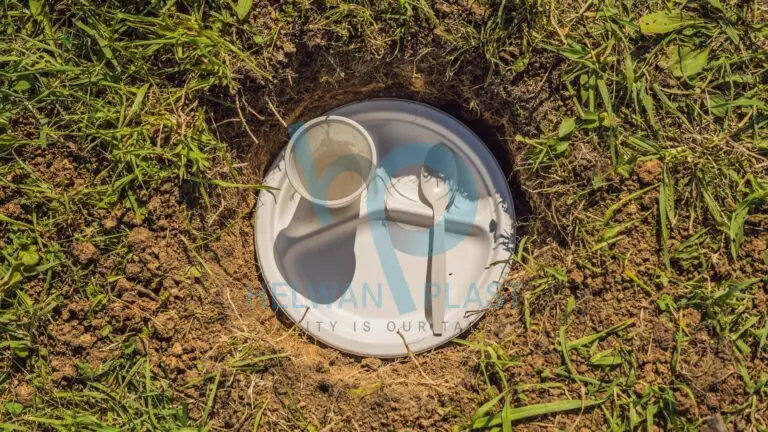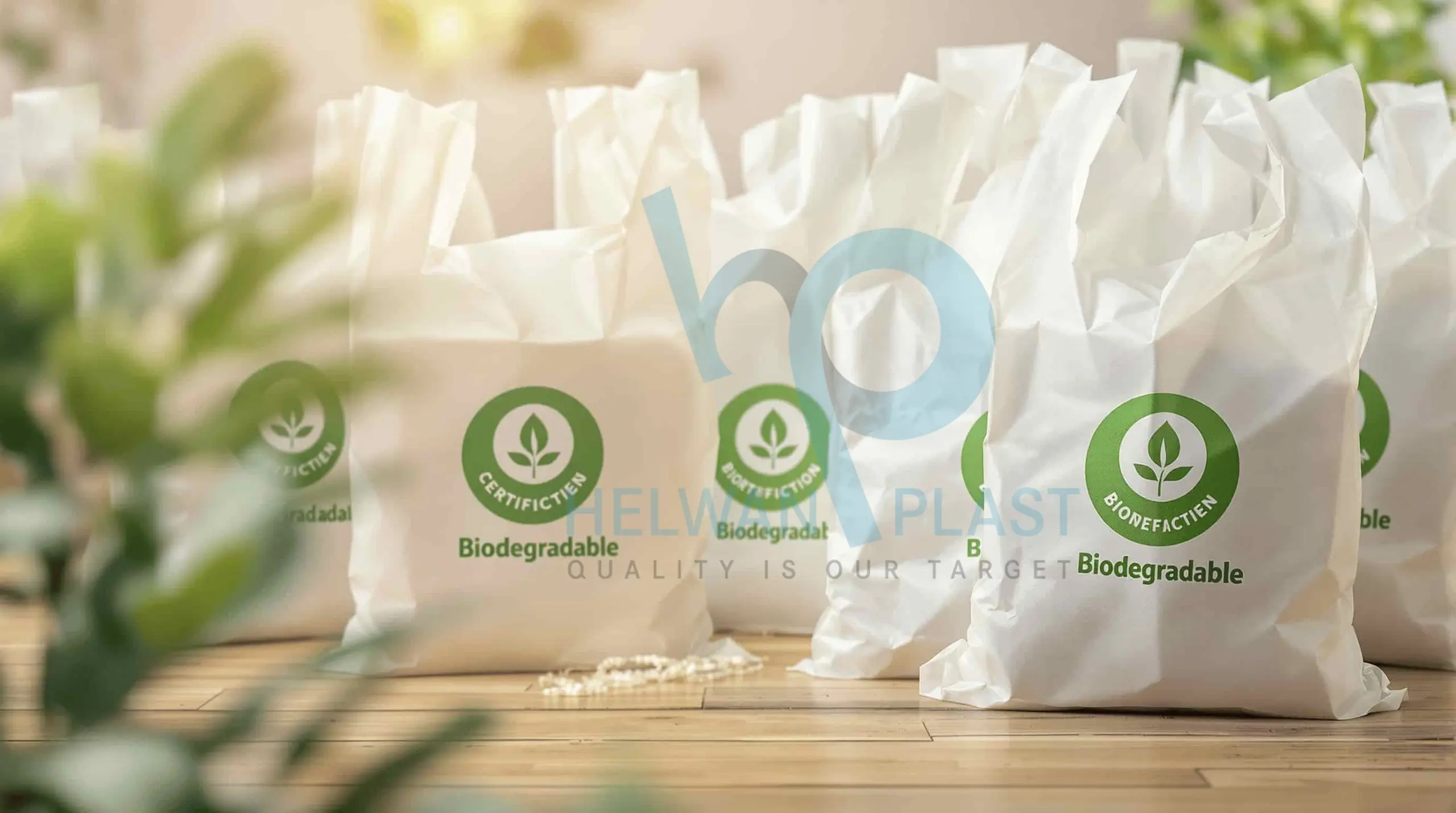Plastic pollution is now a major environmental challenge worldwide, with around 8 million metric tons of plastic waste ending up in the oceans annually. In response to this growing problem, interest has surged in the production of biodegradable plastics. These eco-friendly alternatives to conventional plastics decompose naturally over time, helping to minimize harm to the environment. In this blog post, we’ll take a closer look at how biodegradable plastics are made, the materials used in their production, and the advantages they offer as a sustainable solution.
What is Biodegradable Plastic?
Biodegradable plastic refers to a type of plastic that can be decomposed by natural organisms like bacteria and fungi into organic substances. Unlike traditional plastics that may persist in the environment for centuries, biodegradable plastics can break down more quickly and be safely reabsorbed into nature, often through composting.
Types of Biodegradable Plastic
Biodegradable plastics come in various forms, each offering unique characteristics and applications. Some of the most commonly used types include:
- Polylactic Acid (PLA): PLA is a type of thermoplastic made from renewable materials like corn starch or sugarcane. It’s frequently used in compostable items such as food containers, disposable cutlery, and packaging materials.
- Polyhydroxyalkanoates (PHAs): PHAs are a family of polyesters naturally produced by certain bacteria. Known for their strength and durability, PHAs are commonly used in medical applications, food packaging, and other high-performance products.
- Starch-Based Blends: These blends combine natural starch with other substances like cellulose or biodegradable polymers. They’re widely used for producing compostable items such as plates, cups, and other single-use products.
Manufacturing Process of Biodegradable Plastic
The manufacturing process of biodegradable plastics can vary depending on the type of plastic being produced. However, there are several key steps that are commonly followed in most production lines.
Biodegradable plastics are created by combining specific raw materials through a series of stages including handling, mixing, extrusion, and cooling. Pneumatic conveying systems and bulk material handling equipment play a vital role at various points throughout the process.
1. Raw Material Handling
The process begins with unloading and storing the raw materials used in production. Pneumatic conveying systems are used to move materials like starch, polymer pellets, and additives from storage to the processing units efficiently and hygienically.
2. Mixing and Blending
Advanced blending technologies are used to mix and homogenize the raw ingredients. This step ensures the components are evenly distributed, which is essential for achieving consistent quality and properties in the final plastic product.
3. Extrusion and Molding
Once the ingredients are properly mixed, they are passed through an extruder and formed into a desired shape. The material is then cooled and pelletized. Pneumatic systems may also be used to transport the pellets to the next stage of production or storage. Several technological solutions can be integrated to improve product quality at this stage.
4. Packaging and Storage
The final pelletized product is stored in silos before being packed. Packaging can be done automatically or semi-automatically, using machines that fill small or jumbo bags. The packed product is then ready for dispatch and distribution.
Advantages of Bulk Material Handling Systems in Biodegradable Plastic Manufacturing
Utilizing bulk material handling systems in the production of biodegradable plastics offers a range of benefits that contribute to both operational efficiency and workplace safety. Key advantages include:
- Enhanced Efficiency: These systems streamline production by minimizing the need for manual labor in material movement, resulting in faster and more consistent operations.
- Lower Contamination Risk: By isolating raw materials and finished products, these systems significantly reduce the chances of cross-contamination during handling and transport.
- Improved Workplace Safety: Automated systems reduce the reliance on manual material handling, thereby lowering the risk of injuries and accidents on the production floor.
- Cleaner Work Environment: Well-designed systems help contain dust and airborne particles, leading to better air quality and a healthier environment for workers.
Advantages of Biodegradable Plastic
Biodegradable plastics provide several key benefits compared to traditional plastics. These advantages span environmental, economic, and performance aspects:
- Environmental Benefits: Unlike conventional plastics that can take centuries to break down, biodegradable plastics decompose naturally and can be composted. This helps reduce plastic pollution and supports sustainable waste management.
- Economic Advantages: Since biodegradable plastics can be produced from renewable materials like corn starch or sugarcane, they offer a cost-effective alternative to petroleum-based plastics. Their use also opens up opportunities in emerging markets for compostable products.
- Comparable Performance: Many biodegradable plastics, such as PLA, offer performance characteristics similar to conventional plastics. For instance, PLA can be used for clear, durable food packaging that meets the same standards as traditional plastic packaging.

Biodegradable Plastic Bags for Food
Biodegradable plastic bags are increasingly being used in the food industry as an eco-friendly alternative to traditional plastic packaging. These bags are designed to break down naturally over time, helping to reduce environmental impact while still providing the necessary protection for food items.
Made from renewable resources such as cornstarch, PLA, or other plant-based materials, biodegradable food bags are safe for direct contact with fruits, vegetables, baked goods, and more. They maintain freshness and hygiene while offering a sustainable solution for packaging and storage.
Many biodegradable food bags are certified compostable, meaning they can decompose in commercial composting facilities without leaving toxic residues. However, it’s important to check for certifications like EN 13432 or ASTM D6400 to ensure the bags meet recognized compostability standards.
As consumers become more environmentally conscious, businesses in the food sector are increasingly adopting biodegradable packaging options to reduce plastic waste and align with sustainable practices.
Disadvantages of Biodegradable Plastic
While biodegradable plastics offer many promising benefits, there are also several challenges and limitations to be aware of:
- Ongoing Research Needed: The development of biodegradable plastics is still evolving. More scientific research is required to create stable, reliable compounds that can effectively replace traditional plastics across various industries.
- Limited Availability: Unlike conventional plastics, biodegradable alternatives are not yet widely accessible. This is largely due to the fact that the technology is still emerging and production processes are not yet fully optimized at scale.
- Composting Facility Requirements: For biodegradable plastics to break down properly, they often need to be processed in industrial composting facilities. Unfortunately, such facilities are not available in all communities, which limits the effectiveness of disposal.
Despite these drawbacks, biodegradable plastics remain a promising step toward a greener future. As technology advances and infrastructure improves, they have the potential to serve as a more sustainable alternative to conventional plastic, contributing to a cleaner, healthier planet.
Biodegradable plastic bags for packaging
Biodegradable plastic bags are becoming a popular and eco-friendly alternative in the packaging industry, offering a sustainable solution to the environmental problems caused by traditional plastic. Unlike conventional plastics that take hundreds of years to decompose, biodegradable bags are designed to break down naturally within a shorter period through the action of microorganisms. In this context, Helwan Plast Factory stands out by providing high-quality biodegradable plastic bags for packaging, giving businesses the opportunity to reduce their environmental footprint while maintaining durability and efficiency. Many companies are now choosing biodegradable plastic bags as they not only meet growing consumer demand for greener options but also comply with increasing environmental regulations. By choosing Helwan Plast’s products, businesses can contribute to a cleaner environment while ensuring reliable packaging solutions.

